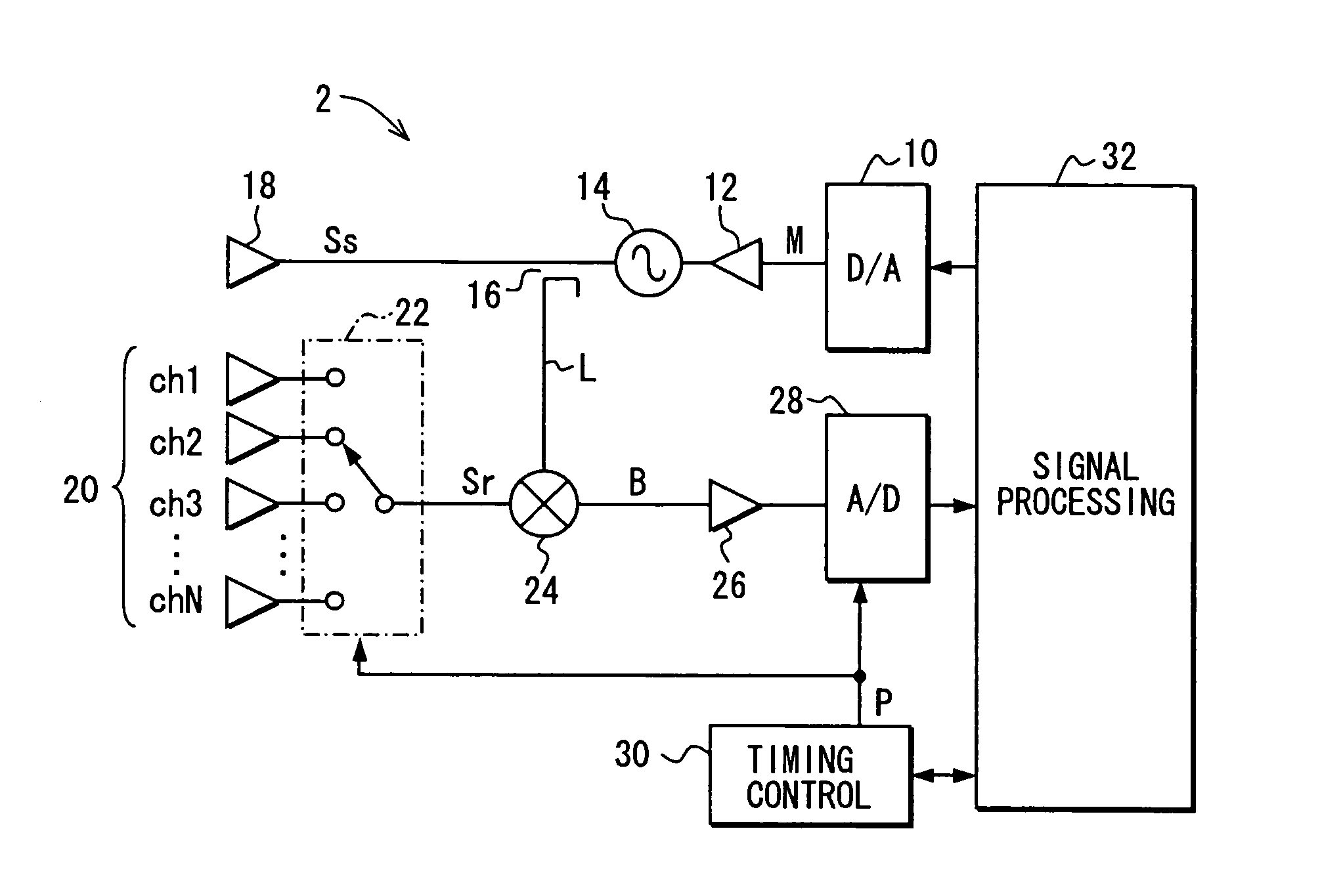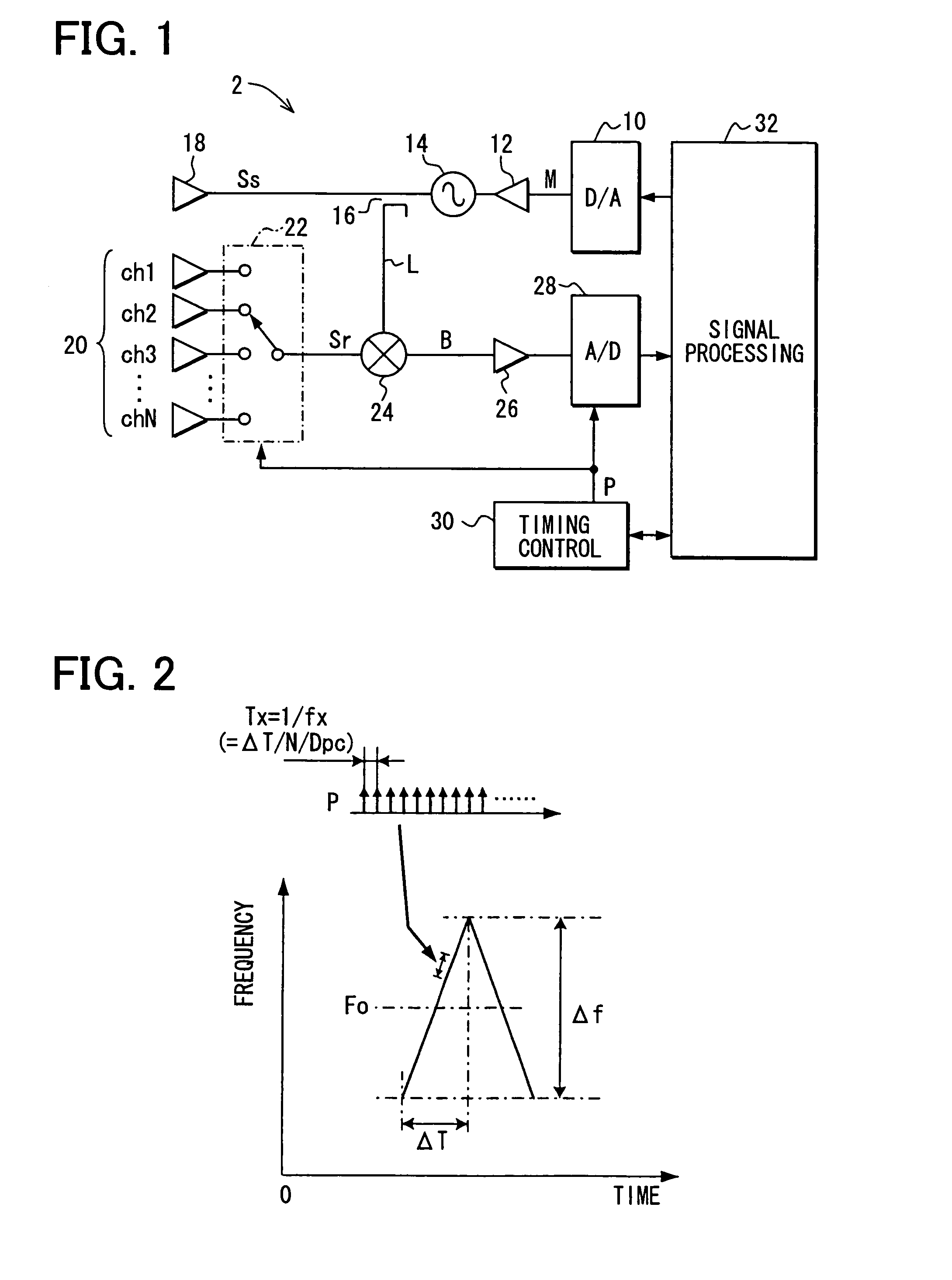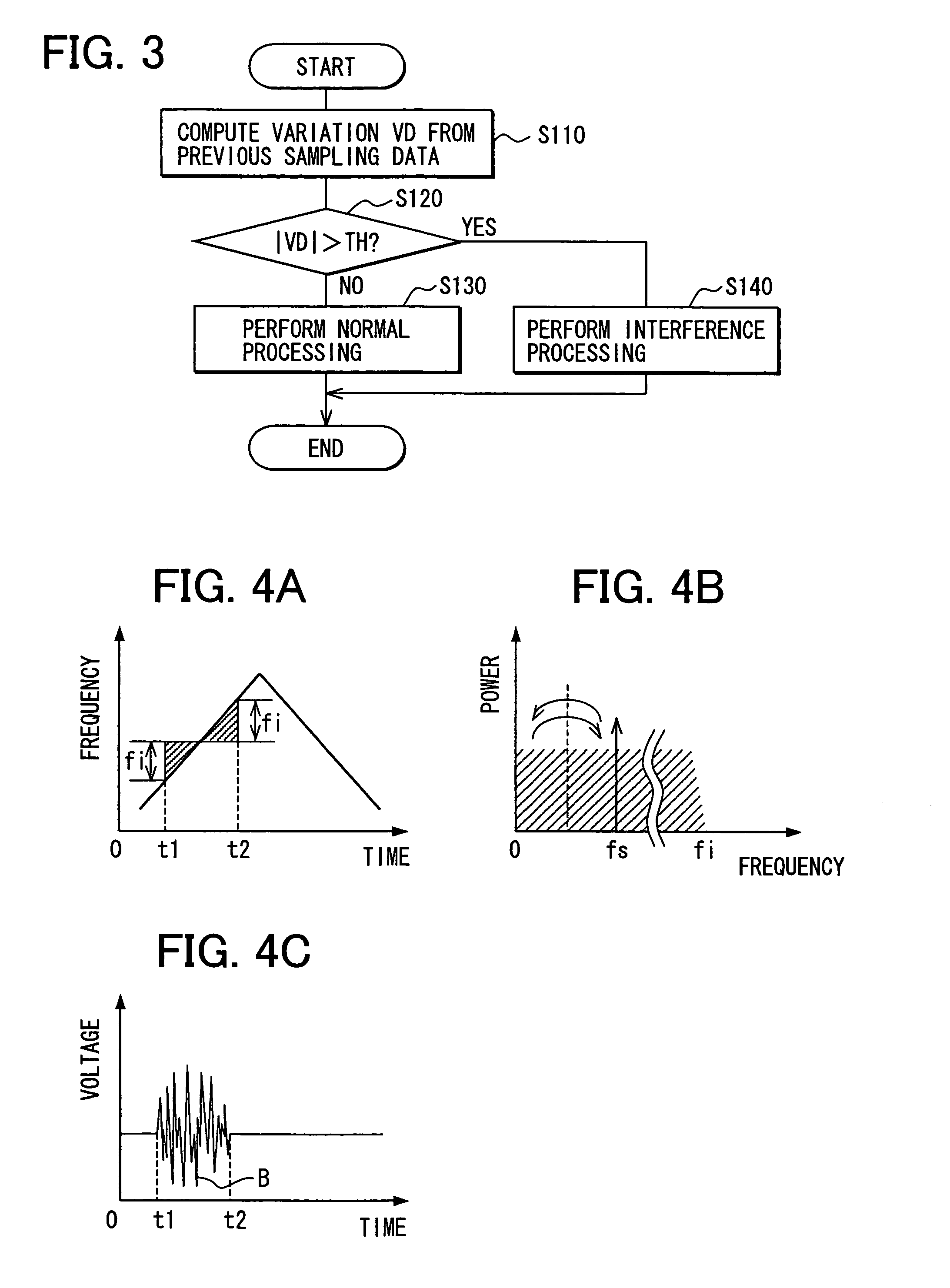Interference determination method and FMCW radar using the same
a technology of interference determination and fmcw radar, which is applied in the direction of using reradiation, measuring devices, instruments, etc., can solve problems such as interference with other radars, and achieve the effect of reducing the maximum value of variation in amplitude (sampled data) and higher accuracy
- Summary
- Abstract
- Description
- Claims
- Application Information
AI Technical Summary
Benefits of technology
Problems solved by technology
Method used
Image
Examples
Embodiment Construction
[0042]Referring to FIG. 1, a vehicle-mounted radar 2 includes: a D-A converter 10 that generates a triangular-wave modulating signal M according to a modulation command; a voltage-controlled oscillator (VCO) 14 to which the modulating signal M generated by the D-A converter 10 is applied through a buffer 12 and varies its oscillating frequency according to the modulating signal M; a divider 16 that divides the power of the output of the VCO 14 to a transmission signal Ss and a local signal L; a transmitting antenna 18 that radiates a radar wave corresponding to the transmission signal Ss.
[0043]The radar 2 further includes: a receiving antenna unit 20 constructed of N receiving antennas that receive radar waves; a reception switch 22 that uniquely and sequentially selects any of the antennas of the receiving antenna unit 20 according to a timing signal P, and supplies a received signal Sr from the selected antenna to the subsequent stage; a mixer 24 that mixes the received signal Sr ...
PUM
 Login to View More
Login to View More Abstract
Description
Claims
Application Information
 Login to View More
Login to View More - R&D
- Intellectual Property
- Life Sciences
- Materials
- Tech Scout
- Unparalleled Data Quality
- Higher Quality Content
- 60% Fewer Hallucinations
Browse by: Latest US Patents, China's latest patents, Technical Efficacy Thesaurus, Application Domain, Technology Topic, Popular Technical Reports.
© 2025 PatSnap. All rights reserved.Legal|Privacy policy|Modern Slavery Act Transparency Statement|Sitemap|About US| Contact US: help@patsnap.com



